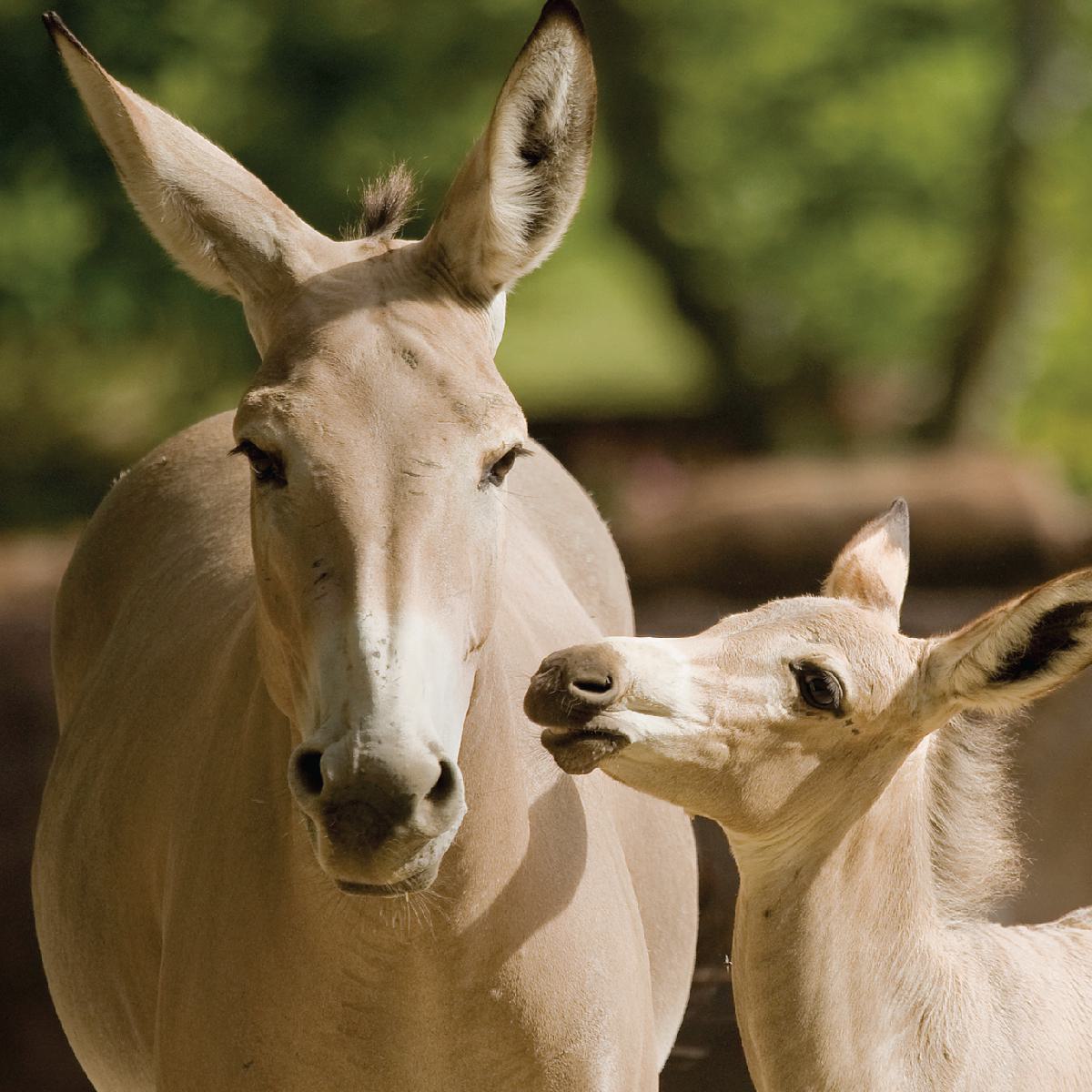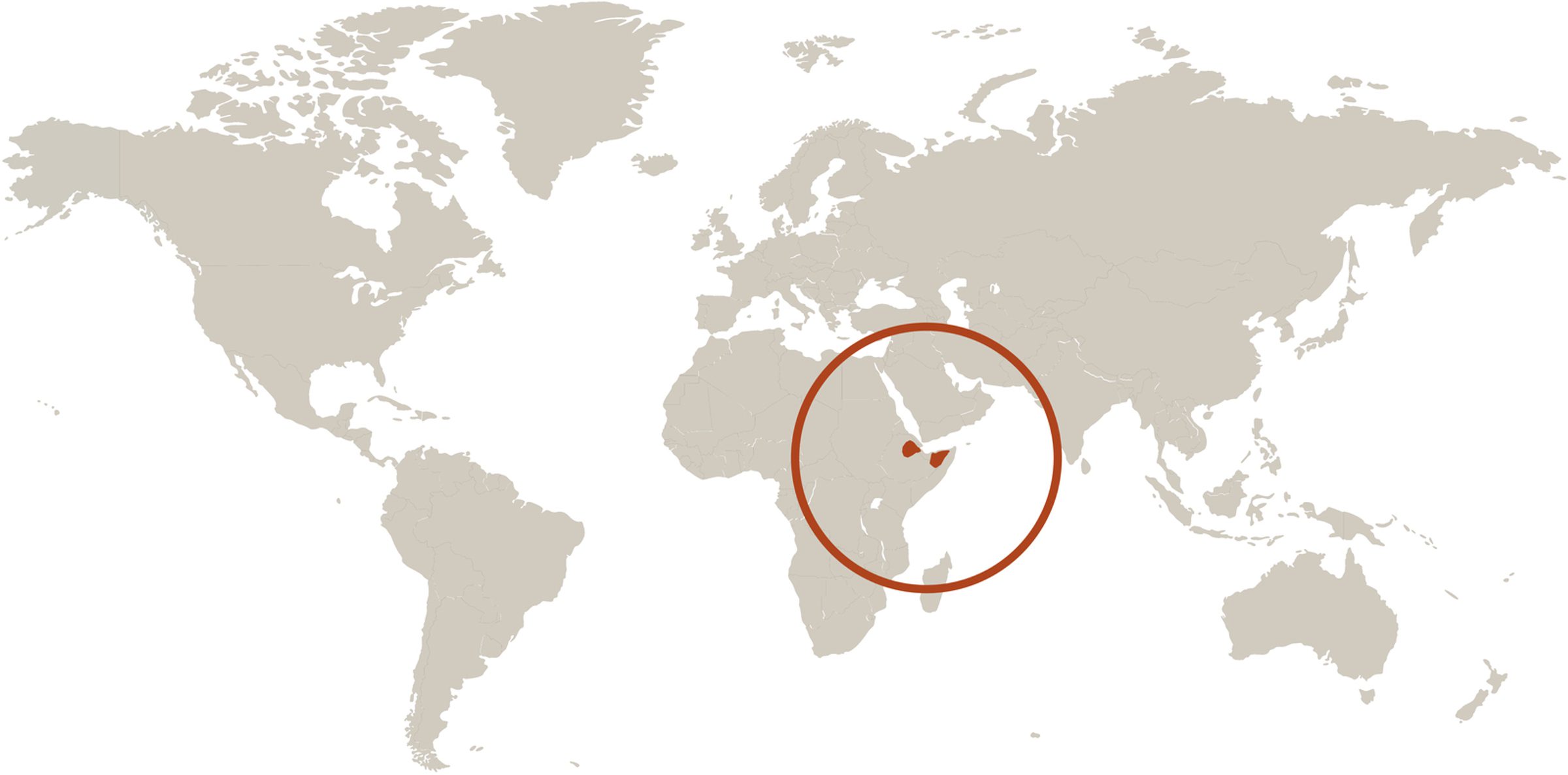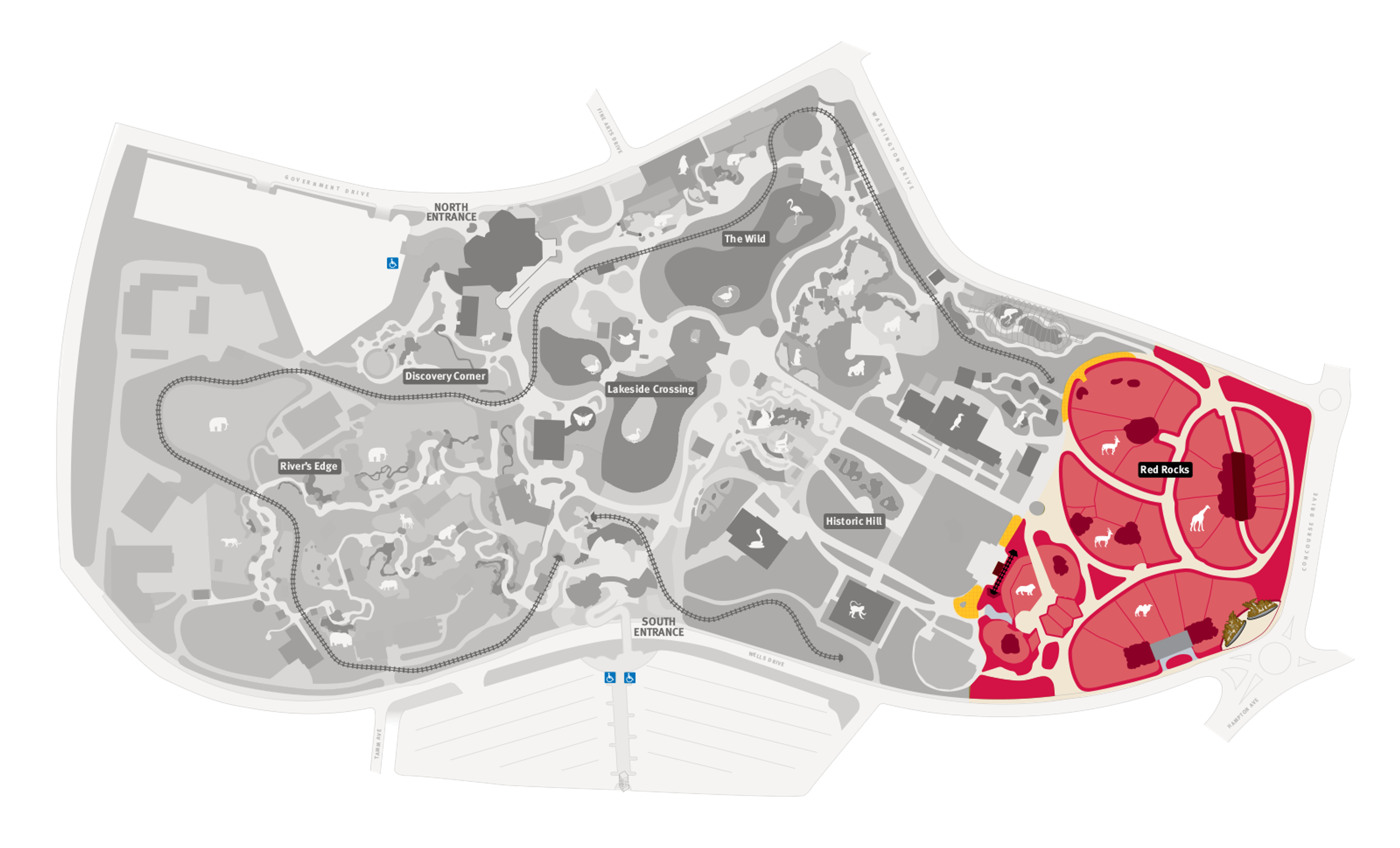
Somali Wild Ass
Equus africanus somaliensis
Did you know?
- This subspecies of the African wild ass is a critically endangered member of the horse family.
- They are closely related to zebras.
- In the 16th century, the Spanish brought domesticated African wild asses to the southwestern United States. The descendants of those animals — best known as burros — still roam through the Southwest.
- On his home turf, the dominant stallion will tolerate males of lower status — as long as they recognize his superiority!
- They may be small, but they're fast; African wild asses have been clocked at 30 miles per hour.
Littlest Wild Horse
Overall, the species is the smallest of the wild equids (horses, asses and zebras). They are mostly gray in color, with a white belly and stripes on their legs. Mothers can always be found with their dependent foals. Some animals (usually males) are solitary, living alone for periods of time.
Desert Dwellers
Grass is the favored food of Somali wild asses, but they also eat shrubs and other desert plants. These animals graze mostly when it's cooler: at dawn, dusk, and during the night. During the heat of the day, they often retreat to rocky hills to rest in shady spots.
Given their hot environment, Somali wild asses stay within easy reach of water; they generally don't wander more than 20 miles from a drinking source. They can go without water longer than other equids, but they still need to drink at least once every two or three days.
Threat Level
- Unknown
- Common
- Near Threatened
- Threatened
- Endangered
- Critically Endangered
- Extinct in the Wild
Critically Endangered
The Somali Wild Ass faces an extremely high risk of extinction in the wild.
Range
Northeastern Somalia and northern Ethiopia
Habitat
Hilly and stony deserts; arid to semi-arid bushlands and grasslands

We care about Somali wild asses
African wild asses face an extremely high risk of extinction in the wild. Some local people hunt them for food and for use in traditional medicine. These animals also compete with domestic livestock for limited grazing grounds and water sources.
The Saint Louis Zoo WildCare Institute Center for Conservation in the Horn of Africa works with a variety of partners to save this species. The Saint Louis Zoo also participates in the Species Survival Plan for Somali wild ass, a cooperative breeding program that helps ensure a healthy population of animals. Learn more about how we are helping this species in the wild.
Find this animal in Red Rocks

SAINT LOUIS ZOO ZONE
Red Rocks
At Red Rocks, you’ll view some of the world’s most powerful predators living near some of the world’s most graceful prey. Tigers, zebra and giraffes all share the natural rocky boulders and outcroppings as their territory. With shading trees and a bird or two among the mammals, Red Rocks is a great place to spend a day at the Saint Louis Zoo.

